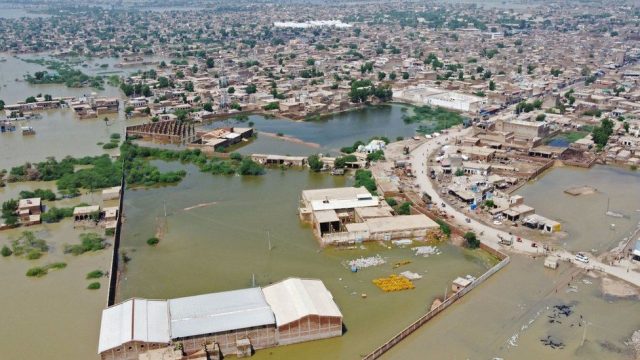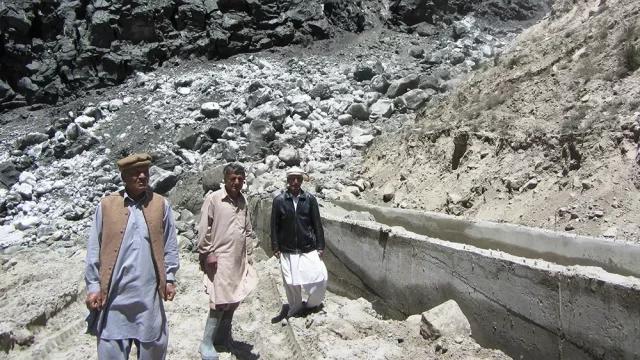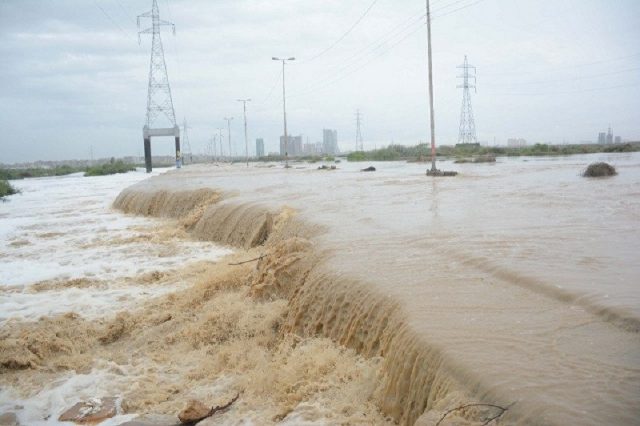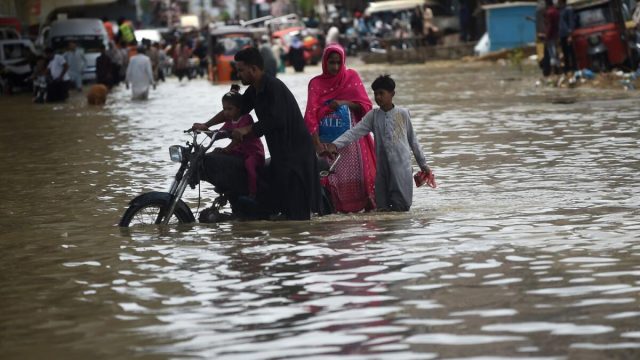Pakistan is presently undergoing a natural disaster of unprecedented extent. With heavy rains submerging at least a third of the entire country, some 33 million people have been displaced and over 1200 lives have perished.
Rain records have broken previous ones, resulting in Pakistan’s worst floods in a century. There are many reasons why Pakistan is facing extreme floods this year.
With flash flooding, rivers breaking their banks, and glacial lakes bursting, Pakistanis are reeling under the catastrophe. Hundreds of families have taken refuge on the roads, and some 2 million acres of farmland are inundated. While Pakistan seeks aid from other countries, climate experts forward several causes behind this disaster.
Heat Waves
In April and May, temperatures crossed the 40 degrees Celsius threshold for prolonged periods in both Pakistan and India. On a burning day in May, Jacobabad witnessed over 51 degrees Celsius.
Malik Amin Aslam, former minister for climate change, said, “These were not normal heat waves — they were the worst in the world. We had the hottest place on Earth in Pakistan.”
Since warmer air can carry more moisture, meteorologists had cautioned that these heat waves may result in “above normal” levels of rain from July to September. Fahad Saeed, a climate scientist, said that the flood this year “is the effect that a 1.1 degree Celsius rise has brought upon us. The result is climate events that are beyond tolerable levels of low and medium income nations.”
Read More: Assam Floods Affecting 45 Lakh Plus People Are Not Being Talked About
Glacial Melt
The burning temperatures also melted glaciers in the northern mountain ranges, thereby increasing the volume of tributaries that feed into the Indus.
Athar Hussain, a climate scientist at COMSATS University, Islamabad, said that he noticed muddy water in the Hunza river, which flows into the Indus. This is a sign of rapid melting, as fast water displaces sediment as it moves downstream.
The Himalaya, Karakoram, and Hindu Kush ranges have almost 55,000 glaciers that feed river systems. Over 1.3 billion people depend on these rivers. Over 7000 of those glaciers are in Pakistan, where melting ice and snow have created thousands of high-altitude lakes at risk of overflowing.
The Pakistan floods are a direct result of several glacial lakes bursting their dams and releasing a dangerous rush of water. The International Centre for Integrated Mountain Development in Nepal predicts that the Himalayas could shed 64% of their ice by 2100, or just one human lifetime. This would phenomenally change the earth’s climate.
Other Unusual Causes
Pakistan also experienced some extraordinary climate events this year. A depression or intense low-pressure system in the Arabian sea brought heavy rain to Pakistan’s coastal provinces as early as June.
The early arrival of monsoon led to Pakistan receiving almost twice its annual rainfall. The southern provinces of Sindh and Balochistan are the worst affected, having got 5 times the annual average rainfall.
Human-induced global warming is another cause. Between 1952 and 2009, Pakistan’s temperatures rose 0.3 degrees Celsius a decade- higher than the global average. Officials have also blamed an ineffective flood warning system, poor disaster management, lack of water drainage, and other municipal shortcomings for the flood.
Mohd Farooq Azam, an Indian glaciologist at IIT Indore, said, “The heat waves this year and the massive floods in Pakistan are a warning. This is the point at which we human beings simply have to turn back.”
Disclaimer: This article is fact-checked
Sources: Nature, The Indian Express, The Economic Times
Image sources: Google Images
Find The Blogger: shoomedha
This post is tagged under: why pakistan is facing such extreme floods, pakistan floods, high death toll in pakistan flood, heavy rains in pakistan, many people displaced in pakistan, extreme heat waves, glacial melt, melting ice caps, depression in the arabian sea, climate crisis, global warming
We do not hold any right over any of the images used, these have been taken from Google. In case of credits or removal, the owner may kindly mail us.
Other Recommendations:
Five Ways You Can Actually Become An Agent For Change In Climate Crisis








































The study below discusses several flooding events.
https://nhess.copernicus.org/preprints/nhess-2021-357/nhess-2021-357.pdf
In it the author describes events from Bangladesh that were far more severe than what is happening now in Pakistan:
– Despite its relatively small area, Bangladesh (previously known as East Pakistan) is one of the most populated regions in the world, as well as one of the poorest (Dasgupta, 2007). Moreover, this country is very disaster-prone, with floods being the second most frequent occurrence after windstorms, and the one that caused the greatest losses.
The floods of 1960 is a clear example of disastrous events that happened in the region, as very intense precipitations caused an
inundation of about 20% of the country area. As a result, 10,000 people were killed, while many others were displaced.
– Bangladesh 1974 Flood – Heavy rains in Bangladesh in the late spring of 1974 caused very severe flooding events in the area around the Brahmaputra, Ganges, and Meghna rivers, killing at least 28,700 people and affecting more than 50% of the entire population of the country (Paul and Mahmoud 2016). Of course, following this flood, other incidents took place in this country, including a severe famine
(Clay, 1985). Very probably the number of casualties are much higher that the one reported in official sources, as the affected
areas were very poor.
Right next door to Pakistan and far more severe.
Severe flooding in the region is due to the La Nina phase of the ENSO cycle. From 1950-75 ENSO was La Nina dominant and resulted in those severe floods. From 1975-2000 ENSO was El Nino dominant which resulted in normal monsoon events. But since 2000 ENSO has been La Nina dominant and so we see a disruption in monsoons. Some are weak and lead to a shortage of water while others, like this year, are string and lead to flooding. If you look up the history of monsoons you’ll find that they follow the ENSO cycle perfectly.